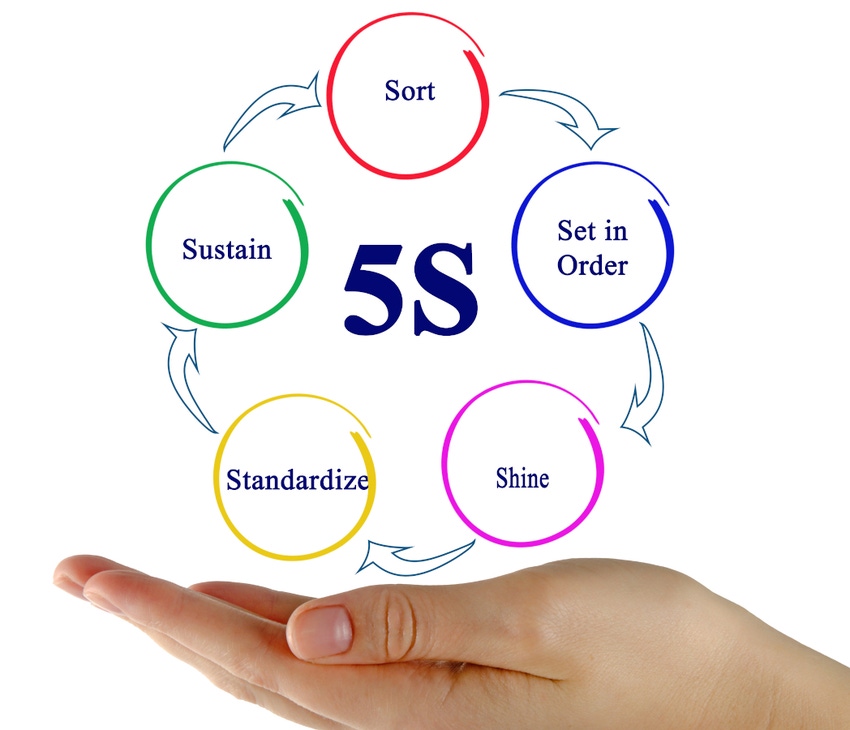March 26, 2020

Essential packaging plants need to keep in running. But how can you ensure employee safety in this time of COVID-19? An organizational system like “5S” is more important than ever. Implementing 5S can help prevent transmission of the disease between workers. In some instances, it might prevent transmission to a customer via contaminated product.
Here’s how to use 5S in this context.
1. Sort: Banish anything not required from the workspace. The more stuff you have, the more surfaces there are to be contaminated and the more time it takes to sanitize them.
2. Set in order: After banishing the unnecessary, organize what’s left. Better organization means less movement looking for things. This may be walking around the area or just rummaging through a pile of stuff on the desk or workbench. Movement increases risk of contamination and spreads it further than it might otherwise.
3. Shine: Make sure everything is clean. This is standard 5S but with an additional step — decontamination. Wipe everything down with sanitizing wipe, spray with disinfectant, or do whatever is needed to assure that it’s not contaminated.
4. Standardize: It’s not enough to rely on individual judgement and memory. Develop a checklist to make sure that it is done systematically. Set a standard time to practice 5S, perhaps at the start of each shift or workday. Assign specific responsibilities so that Betty is responsible for this area, Joe for that one. They should initial the checklist when the task is complete.
5. Sustain: This is always the hardest of all the S’s, and is the responsibility of managers and supervisors to establish a 5S habit. When the program is implemented, they need to make sure that it is carried out on Day 2, Day 3, and so into the future. These programs are easy to start, hard to keep going.
So, what is the sixth S in the title (6S)?
6. Social distancing: Safety is sometimes 6S. But now we need an additional specific kind of safety — social distancing. It’s a lot harder to practice in a workplace than in other contexts. It’s hard to separate workers on a line or in a workcell. Office cubicles may be shared by two or more people. What about meetings? And how about people moving around delivering documents and materials?
Every workspace will present its own unique challenges but here are a few ideas.
It seems odd to hold Webex meetings when the participants are 10 feet away in the next office. On the other hand, it does keep the social distance. Zoom is a free alternative with the benefit that cameras allow non-verbal communication.
Depending on process layout, in a work cell or line, it may be possible to use simple partitions, such as this one from Versare Portable Products, to separate people working side by side.

It is convenient to have all those people together in workcells, but is it really necessary? Perhaps some of the tasks can be moved, even if just a few feet. Every bit helps.
Get creative. Even a workplace that requires people being in close proximity will have ways to practice social distancing.
6S may feel weird but better weird than ill.
About the Author(s)
You May Also Like


